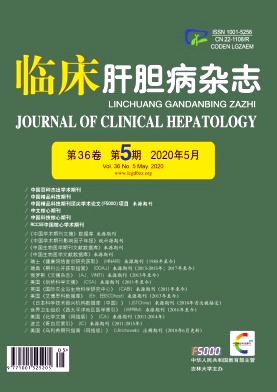|
[1] CHEN N, ZHOU M, DONG X, et al. Epidemiological and clinical characteristics of 99 cases of 2019 novel coronavirus pneumonia in Wuhan, China:A descriptive study[J]. Lancet,2020, 395(10223):507-513.
|
|
[2] WANG D, HU B, HU C, et al. Clinical characteristics of 138hospitalized patients with 2019 novel coronavirus-infected pneumonia in Wuhan, China[J]. JAMA, 2020.[Online ahead of print]
|
|
[3] FANG D, MA JD, GUAN JL, et al. Manifestations of digestive system in hospitalized patients with coronavirus disease 2019in Wuhan, China:A single-center descriptive study[J]. Chin J Dig, 2020, 40(3):151-156.(in Chinese)方丹,马敬东,官佳轮,等.武汉地区新型冠状病毒肺炎住院患者消化系统表现的单中心描述性研究[J].中华消化杂志,2020, 40(3):151-156.
|
|
[4] LIU C, JIANG ZC, SHAO CX, et al. Preliminary study of the relationship between novel coronavirus pneumonia and liver function damage:A multicenter study[J]. Chin J Hepatol,2020, 28(2):148-152.(in Chinese)刘川,江自成,邵初晓,等.新型冠状病毒肺炎与肝功能损伤的关系初探:一项多中心研究[J].中华肝脏病杂志,2020, 28(2):148-152.
|
|
[5] GUAN W, NI Z, HU Y, et al. Clinical characteristics of 2019novel coronavirus infection in China[J]. medRxiv, 2020.[Online ahead of print]
|
|
[6] XU Z, SHI L, WANG Y, et al. Pathological findings of COVID-19associated with acute respiratory distress syndrome[J]. Lancet Respir Med, 2020.[Online ahead of print]
|
|
[7] LI W, MOORE MJ, VASILIEVA N, et al. Angiotensin-converting enzyme 2 is a functional receptor for the SARS coronavirus[J]. Nature, 2003, 426(6965):450-454.
|
|
[8] ZHOU P, YANG XL, WANG XG, et al. A pneumonia outbreak associated with a new coronavirus of probable bat origin[J].Nature, 2020, 579(7798):270-273.
|
|
[9] XIAO QC, LONG FH, YAN Z, et al. Specific ACE2 expression in cholangiocytes may cause liver damage after 2019-nCoV infection[J]. bioRxiv, 2020.[Online ahead of print]
|
|
[10] GUAN GW, GAO L, WANG JW, et al. Exploring the mechanism of liver enzyme abnormalities in patients with novel coronavirus-infected pneumonia[J]. Chin J Hepatol, 2020, 28(2):100-106.(in Chinese)关贵文,高林,王建文,等.新型冠状病毒感染肺炎患者肝酶异常的机制探究[J].中华肝脏病杂志,2020, 28(2):100-106.
|
|
[11] YUAN L, YANG YG, SHEN YX, et al. Research advances in drug-induced liver injury[J]. J Clin Hepatol, 2017, 33(2):375-378.(in Chinese)袁玲,杨永耿,沈有秀,等.药物性肝损伤的研究进展[J].临床肝胆病杂志,2017, 33(2):375-378.
|
|
[12] HUANG C, WANG Y, LI X, et al. Clinical features of patients infected with 2019 novel coronavirus in Wuhan, China[J].Lancet, 2020, 395(10223):497-506.
|
|
[13] LIU J, LI SM, LIU J, et al. Longitudinal characteristics of lymphocyte responses and cytokine profiles in the peripheralblood of SARS-CoV-2 infected patients[J]. medRxiv, 2020.[Online ahead of print]
|
|
[14] XU Z, SHI L, WANG Y, et al. Pathological findings of COVID-19associated with acute respiratory distress syndrome[J]. Lancet Respir Med, 2020.[Online ahead of print]
|
|
[15] ERLICH J, TO E, LIONG S, et al. Targeting evolutionary conserved oxidative stress and immunometabolic pathways for the treatment of respiratory infectious diseases[J]. Antioxid Redox Signal, 2020.[Online ahead of print]
|
|
[16] Drug-induced Liver Disease Study Group, Chinese Society of Hepatology, Chinese Medical Association. Guidelines for the management of drug-induced liver injury[J]. J Clin Hepatol,2015, 31(11):1752-1769.(in Chinese)中华医学会肝病学分会药物性肝病学组.药物性肝损伤诊治指南[J].临床肝胆病杂志,2015, 31(11):1752-1769.
|







 DownLoad:
DownLoad: